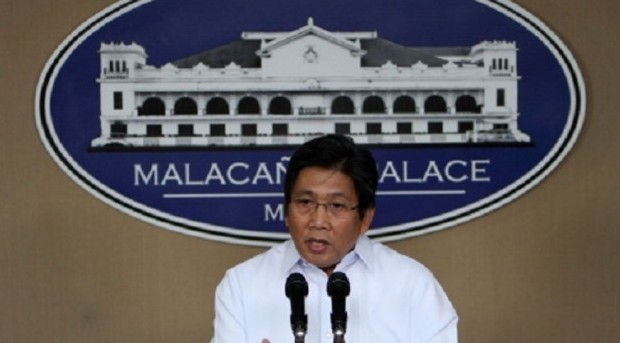On int’l disaster reduction day, Palace says PH is ready
THE GOVERNMENT has successfully fortified the “physical and psychosocial infrastructure of the country for disaster risk reduction and management,” Malacañang said Monday.
Asked to comment on today’s global observance of International Day for Disaster Reduction (IDDR), Presidential Communications Secretary Herminio Coloma said the Aquino administration has “inculcated a disaster resilience mind-set at the community level” to reduce the impact of natural catastrophes.
“Citizens and local leaders have stepped up and assumed responsibility for securing lives and property,” Coloma, also head of the Presidential Communications Operations Office, told the Inquirer.
In a statement, the United Nations Office for Disaster Risk Reduction (UNISDR) said the International Day for Disaster Reduction is a “day to celebrate how people and communities are reducing their exposure to disasters and raising awareness about the importance of disaster risk reduction.”
Local ingenuity
This year, the IDDR is focusing on the “use of traditional indigenous and local knowledge which complement modern science and add to an individual and society’s resilience to disasters.”
In a related development, the UN agency has named the Ifugao tribe in the Cordillera Administrative Region (CAR) as the first Philippine indigenous community to be recognized as “champions for disaster risk reduction.”
During simple rites at the Senate, the Ifugaos were cited last week by the Geneva-based body for their “knowledge of the environment in preserving the 2,000-year-old rice terraces in the CAR as the 8th Wonder of the World.”
Ifugao experience
Jerry Velasquez, UNISDR head of advocacy, expressed hope that the Ifugaos’ experience “will inspire the rest of the world and encourage governments to ensure more disaster resilience in the future.”
For her part, Sen. Loren Legarda, the UN’s Asian champion for disaster risk reduction, said “the Ifugaos’ love for their heritage and their dedication to preserving their traditions are important elements for maintaining harmony between man and nature.”
“Their formula for resilience is embedded in their culture and age-old traditions and needs to be preserved,” she said.
The Senate ceremony was part of the Summit of Conscience for the Climate, which promoted the 21st Conference of the Parties to the UN Framework Convention on Climate Change, scheduled in December in Paris.
Representatives of the Ifugao community, led by Gov. Denis Habawel, Dr. Serafin Ngohayon of Ifugao State University and officials of the Save the Ifugao Terraces Movement, were awarded certificates of resilience by Velasquez and Legarda during the event.
The International Day for Disaster Reduction “encourages every citizen and government to take part in building more disaster-resilient communities and nations,” said the UNISDR.
The UN General Assembly sees the annual celebration as a means of promoting a global culture of disaster reduction, including prevention, mitigation and preparedness.
“Originally celebrated on the second Wednesday of October, the body decided to designate Oct. 13 each year as the date to celebrate the IDDR,” it said.
Last year, the IDDR recognized the role older people play in DRR-related activities.
Making cities resilient
Meanwhile, from only 1,400 in 2012, the number of cities and other communities worldwide that have signed up for the UN’s “Making Cities Resilient to Disaster” campaign has reached more than 2,400, according to the UNISDR.
However, only 120-plus of the LGUs are in the Philippines, where there are a total of 144 cities, 81 provinces, 1,490 towns and 42,028 barangays.
Since its launch in May 2010, the UN campaign has been a “vehicle for local governments to give more attention to disaster risk reduction and develop partnerships with key stakeholders, including civil society, the academe and the private sector,” the UNISDR said.















